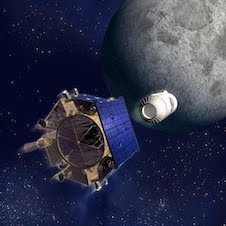 However, there was still a chance that water might be found in special places on the Moon. Due to the Moon's orientation to the Sun, scientists theorized that deep craters at the lunar poles would be in permanent shadow and thus extremely cold and able to trap volatile material like water as ice perhaps delivered there by comet impacts or chemical reactions with hydrogen carried by the solar wind.
However, there was still a chance that water might be found in special places on the Moon. Due to the Moon's orientation to the Sun, scientists theorized that deep craters at the lunar poles would be in permanent shadow and thus extremely cold and able to trap volatile material like water as ice perhaps delivered there by comet impacts or chemical reactions with hydrogen carried by the solar wind.For more details:http://www.nasa.gov/mission_pages/LRO/news/lro-lcross-impact.html















